The demand for portable power solutions has grown in recent years as people have A) wanted to get off-grid and away from fossil fuels but B) want to stay connected with their phones, tablets, computers, or maybe an essential like a CPAP machine. There’s a growing demographic that wants to camp, overland, or just have a reliable power backup in case of emergency, but who don’t want to deal with the noise and exhaust from a gas-powered generator. The solution? A battery-based power generator that can be recharged in a variety of ways…including via solar energy. For those wanting a versatile solution that isn’t too big and isn’t too expensive, the BLUETTI EB70S and PV200 Solar Panel combination is a great option.

The EB70S has a 716Wh capacity battery that is rated for 2500+ recharge cycles, which is more than many competing batteries. This allows for 800W of pure sine-wave power, though you can get up to 1400W of surge power for devices that have a higher draw during start-up. I’ve found that this really helps expand the kinds of devices that can be powered from it. For example, I ran our high powered blender without issue. Initially I got an error message that showed a short. I was curious, and found that in fact the plug was wet. I dried the plug, and everything ran just fine. I ended up being impressed with the smart power management rather than being annoyed. I was able to power my portable tea kettle fine (it drew right at the 800W of normal power), but when I hooked up my large kettle that is rated for a 1500W draw, the EB70S smartly gave me an overload message without trying to power the device. I’ve tested other power stations that tried to power things with too high of draw and then had to shut down, so I was again impressed with the intelligent power management.

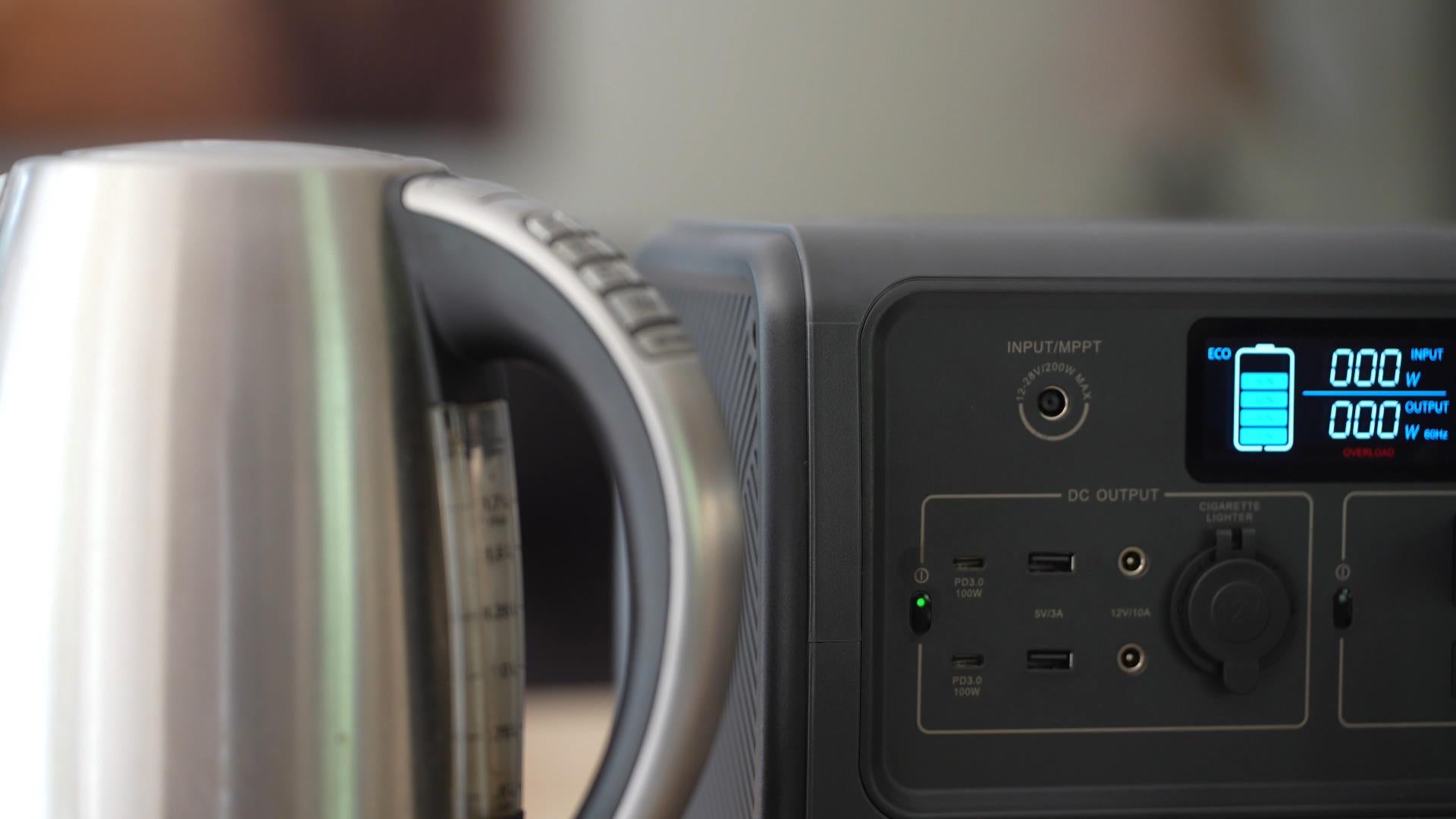
As a photographer and videographer, one of my applications for portable power stations is to run location spotlights for video. I was able to run large spotlights with 150W of draw for hours without issue. I also do construction, so I regularly use the EB70S to charge the batteries for my power tools, which is useful on a jobsite without power. I charge the batteries even at home from it, however, mostly because I love the idea of running all of my tools “for free” by using solar energy to power them. I almost exclusively recharge the power station from the PV200S. Out of the dozens of times I’ve recharged the EB70S, I think I’ve only used the AC Adapter one time.
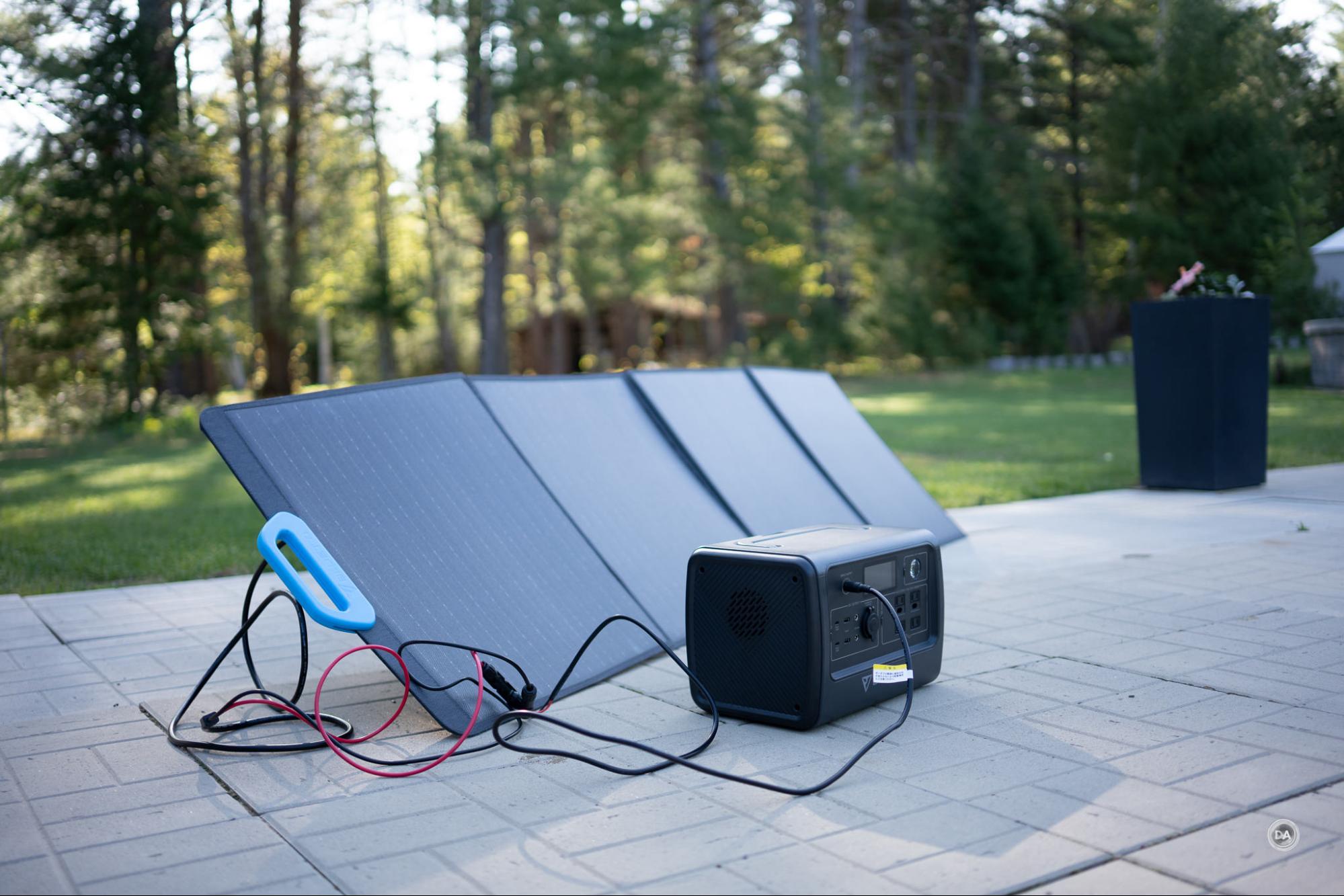
You also have multiple options for charging the EB70S, including from a solar panel like the PV200 (charging takes 5-5.5 hours depending on the sunlight conditions), from the wall via the included AC adapter (4-4.5 hours), or from a car using the included 12V DC adapter (cigarette lighter plug style) in 7-7.5 hours. Power input is capped at 200W, which is actually a little faster input than some more expensive units that I’ve tested.

The PV200 solar panel that I tested is reasonably compact for a 200W panel, folding down into a footprint similar to the 100W panels from other brands, though, when arrayed, it has 4 rather than 2 panels. It has a built-in handle and weighs right over 16 pounds (7.3kg). It is rated at 23.4% efficiency, which is quite good for the current technology, and is wired in parallel so that it continues to produce even if part of it is in shade. There are kickstands on the back of the panel that allow you to position the panel at various angles to maximize solar energy. I’ve seen charging rates on the EB70S (which shows you the amount of power being input from the panel) as high as 170+ watts, which is pretty good considering that I live in Canada, a country not exactly known for abundant sunlight! It has a standard MC4 connector that works with other power stations as well and that folds away neatly into a zippered pouch built into the back of the panel. My only complaint is that the handle on the panel isn’t quite as robust as some other brands. I’ve used it extensively for about nine months at this point, however, and it has continued to perform well.
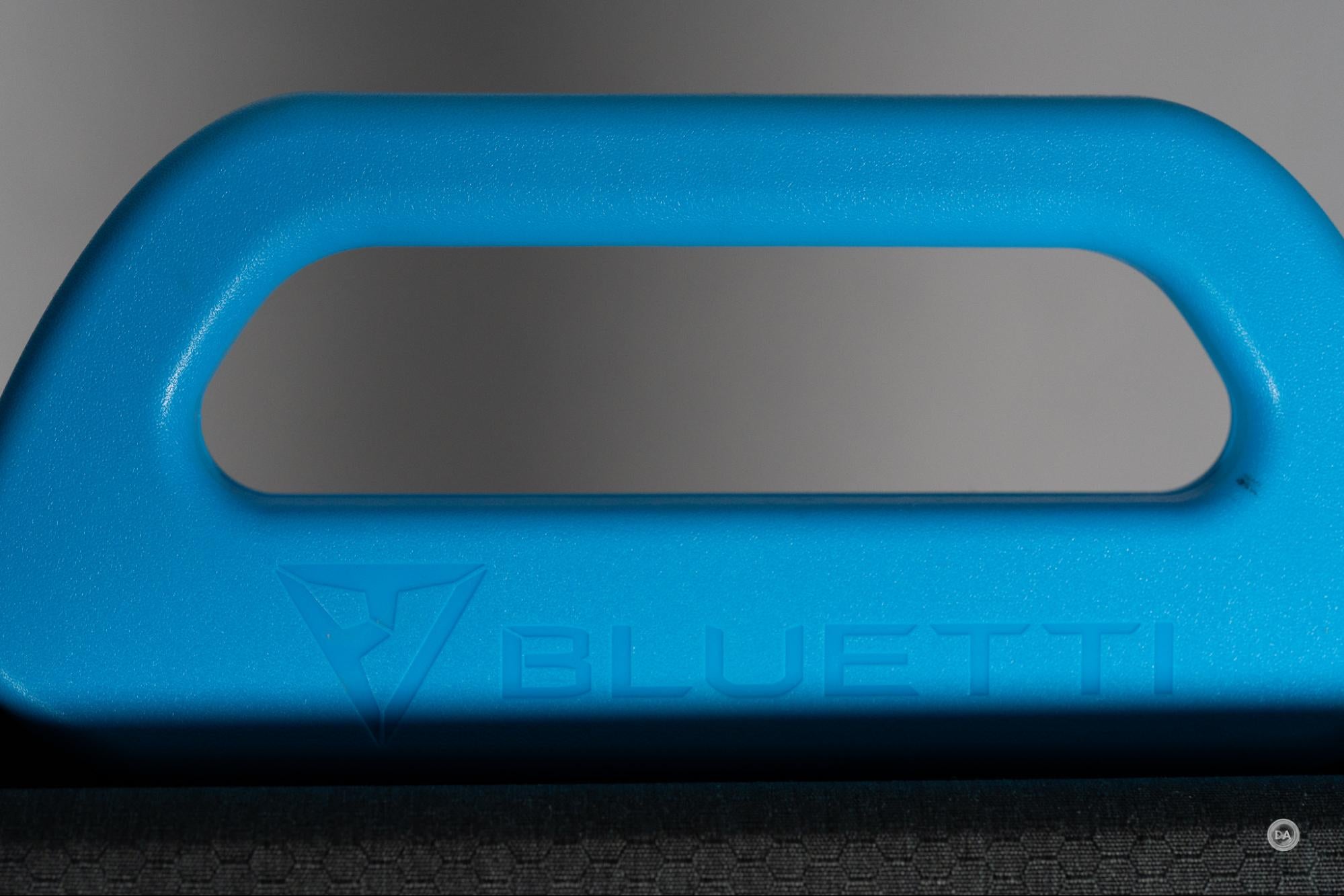
There are a variety of ways to power devices off the EB70S. It has 4 x 120V/20A AC Outlets that can power up to 800W in total, but also has 2 x USB-C ports (rate up to 100W of power delivery), 2 x USB-C ports (5V/3A output), and then 1 x 12V/10A DC car outlet along with 2 x 12V/10A DC5521 ports. There’s even a wireless charging pad on top that is rated up to 15W for inductive charging of your phone. I’ve had some issues with different adapters in the past not charging all of my various cameras via USB-C (one charger will work for one brand of camera, but not another, etc…), but the clean power delivery via USB-C on the EB70S has allowed for all of my brands of camera to charge just fine from it. Charging small devices like cameras or phones has very little impact on the battery level of the EB70S. Bluetti estimates that you can recharge your phone 50+ times before needing to recharge the EB70S itself.
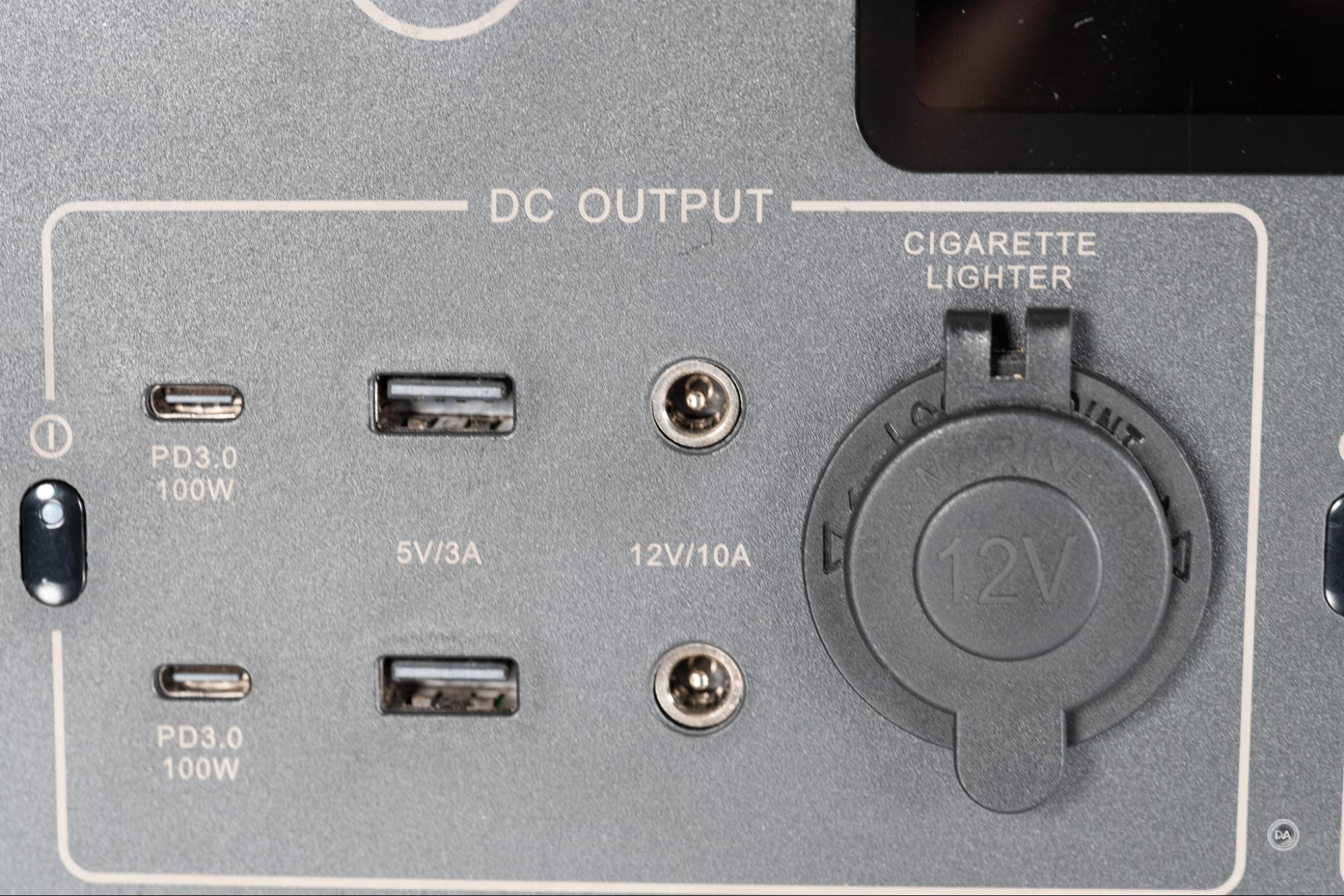
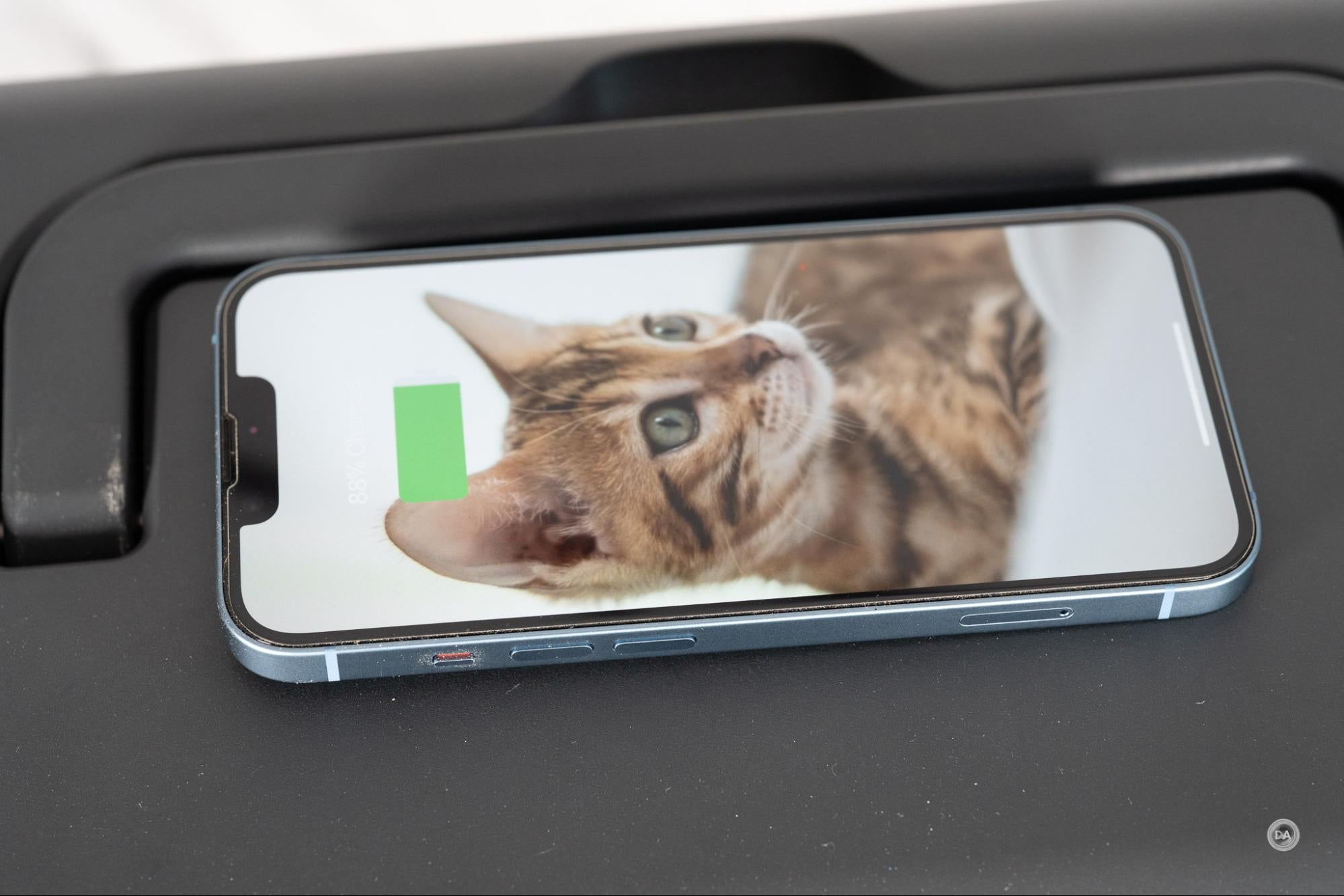
One clever feature for dark situations is a multi-level LCD light on the front. It has helped me in power outages to be able to see while I hook various things up to the EB70S.
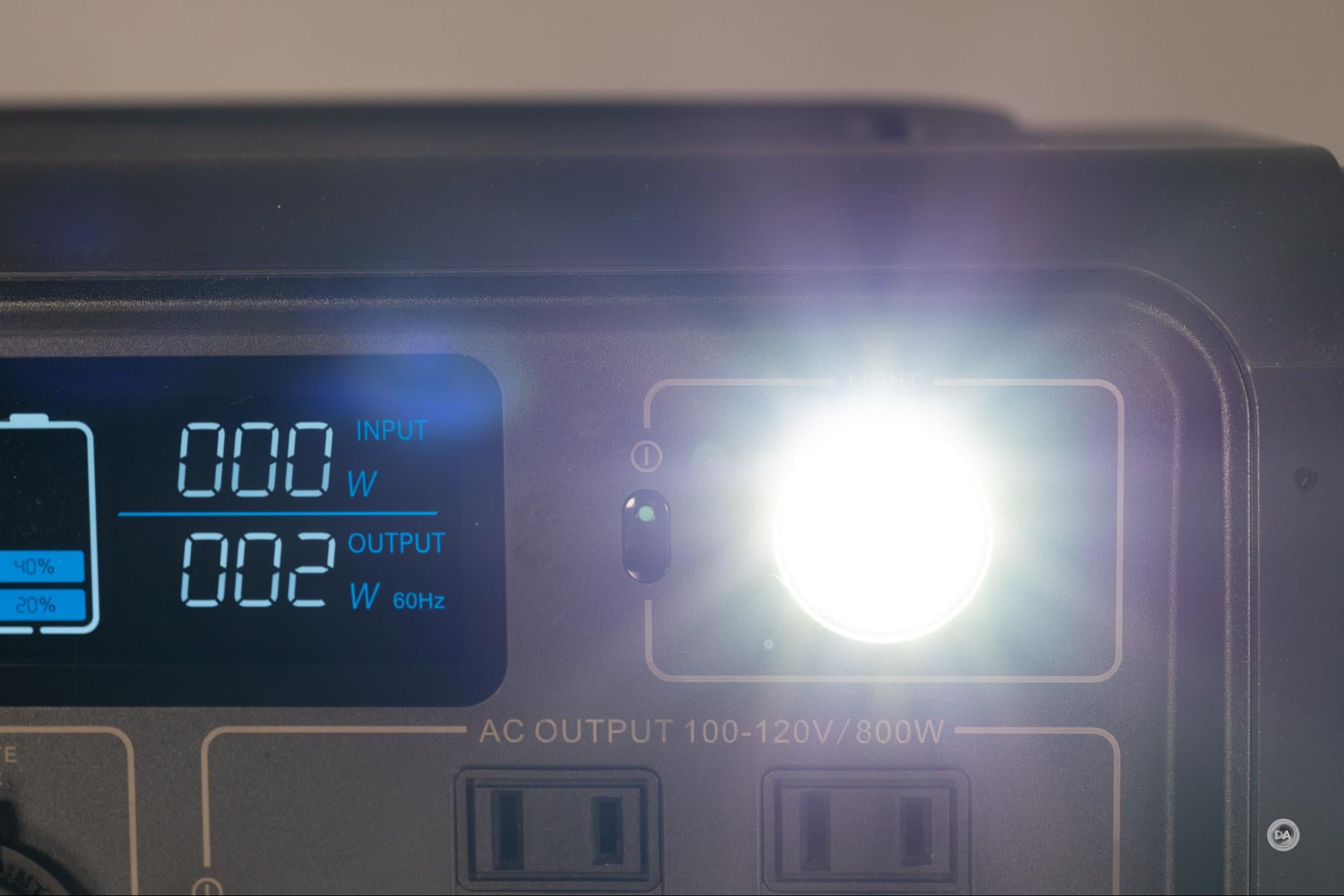
The EB70S has a fairly standard size for a power station of this output, weighing in at 21.4 pounds (9.7kg). It is 12.6 x 8.5 x 8.7” in size (32 x 21.6 x 22.1 cm) and has a retractable handle on top that makes it easy to move around. I have only one real complaint about the EB70S , and that has to do with the LCD readout. The LCD itself is great – clear and bright, and with plenty of information on screen. But while the screen shows an exact amount of output or input power, the overall battery life of the unit is shown in just five steps (0-20%, 20-40%, etc…) Some competing units show remaining power in total percentage, which is more transparent in letting you know how much longer you can go either before needing a charge or how much longer charging the unit will take. Other than that, however, my list of complaints is very brief.

The EB70S is extremely competitively priced at roughly $600 USD or $700 Canadian dollars. You can pair it with the PV200 solar panel for a total of right under $1000 USD or $1250 CDN, which makes it cheaper for the whole package than what some brands charge for just an equivalent power station. That makes the EB70S and PV200 a tremendous value and well worth your consideration if you are looking for a portable power solution.




